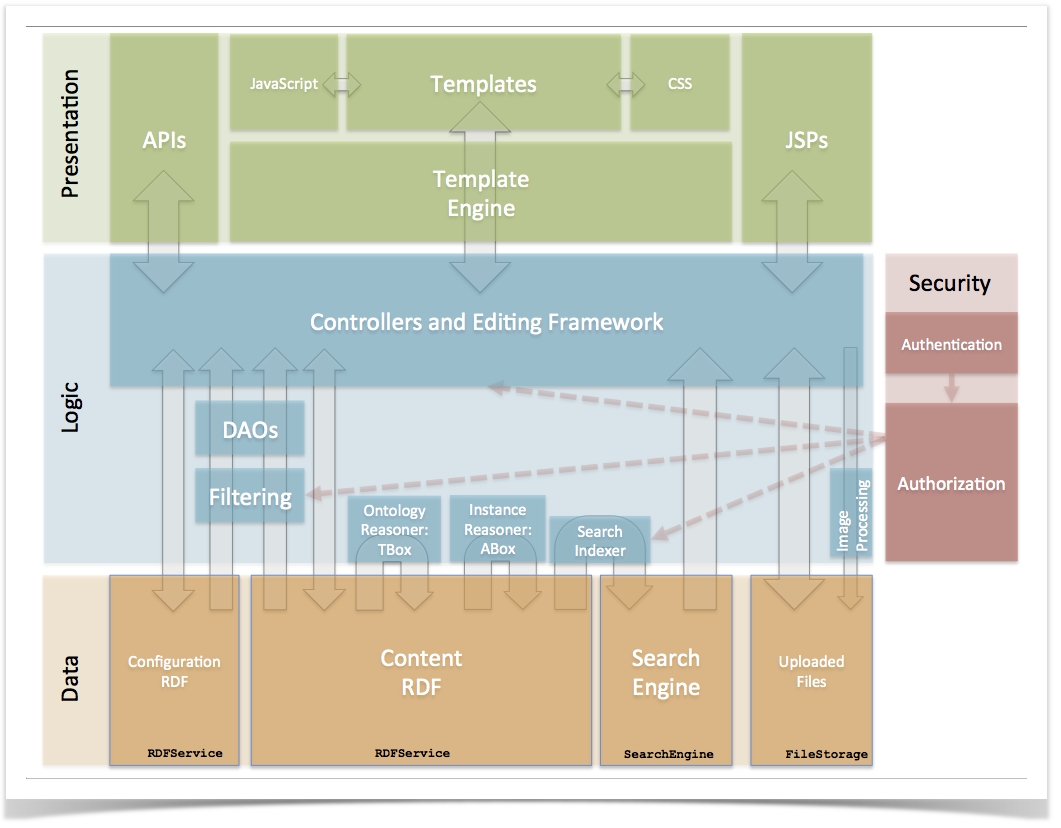VIVO Documentation
Page History
...
| Table of Contents |
|---|
Data
VIVO has four data stores. When copying, backing up, or restoring a VIVO installation, all four data stores should be considered.
...
Configuration RDF uses a triple-store or other SPARQL endpoint. Beginning with release 1.7 of VIVO, the The triple-store is a Jena TDB implementation, with files kept in the home directory of the VIVO application. In previous releases, the Configuration RDF used a Jena RDB implementation, sharing the MySQL database with the Content RDF.
The interface is specified by RDFService.java.
...
The interface is specified by VitroFilters.java
...
Ontology Reasoners: ABox and TBox
One of the principal strengths of RDF is that we can infer additional data from the data at hand. However, the logic involved can be complicated and time-consuming.
...
The Search Indexer reacts to changes in the Content RDF, updating the search index to reflect those changes. Several types of logic are employed to determine which individuals are affected by the RDF changes, and how to build the search records for those individuals. Sometimes a single change requires that several search records be rebuilt.
Image Processor
When images are uploaded through the GUI, the Image Processor creates a thumbnail image, cropped and sized as the user requests. Currently, the image processor is based on the Java Advanced Imaging library.
Presentation
The presentation layer is where the web pages of VIVO are created. Most of the web pages are created using the Freemarker template engine. However, a number of pages are still created by JSPs.
...

